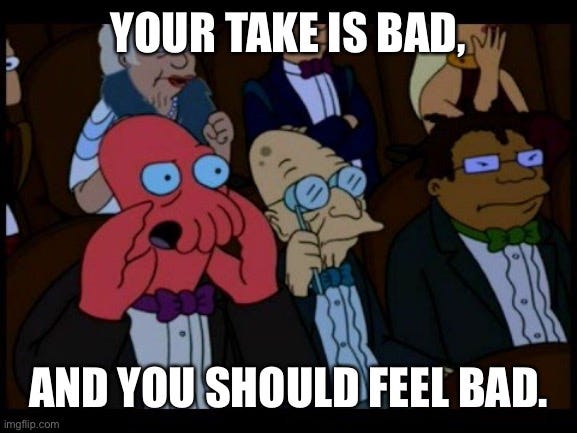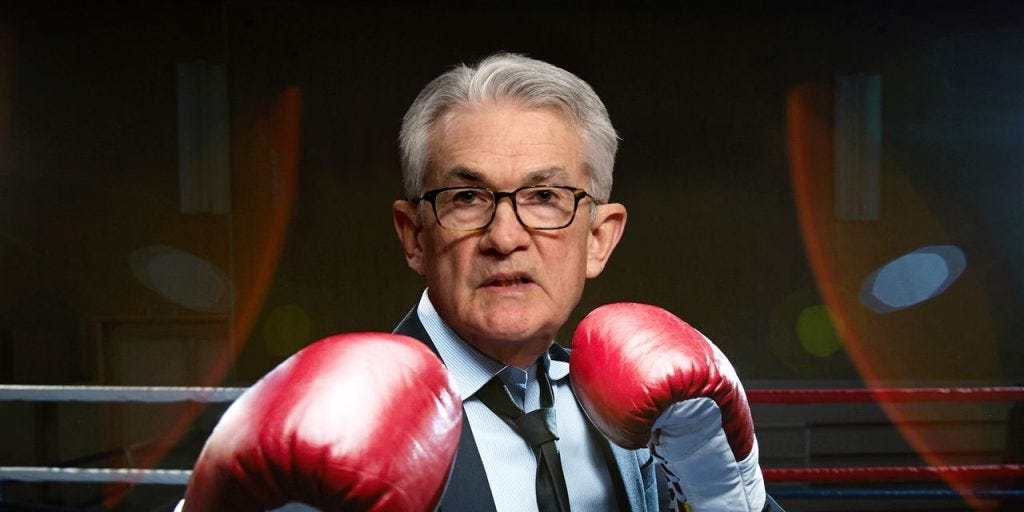Broken records and broken windows
Last week the FOMC met and lowered interest rates a quarter point to 4.5%. This was in line with market expectations as predicted by the CME FedWatch tool. The real fireworks were in the post-decision press conference (transcript here).
I thought there was a good discussion about how the Fed takes into account upcoming changes in policy decisions. Chair Powell did a good job describing how these policy changes take time to get through Congress. Once the final draft takes shape, the Fed goes to work understanding and mapping out how these changes might impact monetary policy. Then there can be further lag before these changes actually affect the economy.
There was also discussion about what the Fed is going to do in the future. For a long time the Fed was hyper-focused on the inflation figures. Then there was a pivot and the Fed became worried about the labor market. The Fed realized that the figures coming out of the BLS were not trustworthy. They began to signal that there was a “better balance” in their dual mandate of maximum employment and price stability and began to watch the labor market much closer. During this presser, Powell largely removed the guardrails on upcoming meetings.
“You know, you mentioned a bunch of indicators, and you're right, you know, the openings to unemployment rate is back to a normal level. I would characterize it more broadly as "normalizing". You mentioned wages. Wages are still running just a bit above where they would need to be to be consistent with two percent inflation, unless productivity is going to remain at this high level.
But overall, it's a good labor market. We could talk about 20 different data series. We'll be looking at all of them, of course. But you know, we don't want the labor market to soften much from here. We don't think we need that to happen to get inflation back to two percent.”
Forward guidance has been eviscerated and Powell went through all the previous indicators that the Fed had relied upon and provided no new ones to watch outside of geopolitical risks.
Then press conference went full meme viral.
VICTORIA GUIDA. Hi, Victoria Guida with Politico. Some of the president elect’s advisors have suggested that you should resign. If he asked you to leave, would you go?
CHAIR POWELL. No.
VICTORIA GUIDA. Can you follow up on is -- do you think that legally that you're not required to leave?
CHAIR POWELL. No.
Politics has no place in economic policy but there are some in the press that think politics can be found everywhere if they look hard enough and have no understanding of monetary policy. They ask bad questions and waste everyone’s time. Vicky wasn’t the only one that asked about Powell’s take on the election but her exchange was the dumbest and easiest to meme. Congrats Vicky.
I feel like a broken record every time I watch one of these FOMC pressers because half the press seems so dumb. They fail to ask challenging questions and instead opt for political points or gotcha questions. Is that what you learn at journalism school? Maybe newspapers should hire economists to ask the real questions and then teach them how to write a story instead of the other way around.
Jerome Powell’s best exchange happened a later in the press conference and was overshadowed by the meme-able moment. He was asked about why forward guidance is dead.
“I guess I should start by saying that we think that the economy and we think our policy are both in a very good place; a very good place. And -- but as you look forward, you say, "What are the risks?” And one risk is that we would move too quickly and find ourselves having moved too quickly and inflation comes back and we lost our chance to get inflation back to two percent. So we have to avoid that risk. And that -- to avoid that risk, that means you want to move carefully. The other risk is that we move too slowly, and that we allow the labor market to weaken too much and do unnecessary damage to the labor market and to people's working lives. That says don't get behind the curve. So these are two -- these two things are the two risks that we have to manage. And so we're in the middle here. We try to be in the middle and deal with both of the -- manage both of those. Again, the idea is to maintain support, the strength that we have in the labor market and the economy, but also with somewhat less restrictive but still restrictive policy, enable further progress toward our two percent inflation goal. There -- and so there -- you know, there -- this is the thing, we're -- meeting by meeting we're going to be making our assessment of what the right path is. You know, it's not as important -- the precise timing of these things is not as important as the overall arc of them, and the arc of them is to move from where we are now to the sense of neutral, a more neutral policy. We don't know exactly where that is, we only know it by its works. We're pretty sure it's below where we are now. But as we move further, there will be more uncertainty about where that is, and we're going to move carefully as this goes on so that, you know, we can increase the chances that we will get it right.”
A question that should have been asked of Powell is if the neutral rate is rising or falling. Could it change depending on fiscal policy and how quickly could that change occur. Also, is it currently changing because it is anticipating something coming. The most recent data from the CME FedWatch tool estimates the Fed will land rates in the 3.75-4.00% range and that they will get there in September of 2025. This is an incredible change from this time last year when the market was expecting a ridiculous number of rate cuts and a much lower Fed Funds Rate. Powell has stated that we’ll know when we hit the neutral rate “by its works”. It would be great if someone asked exactly what those “works” are.
Bad Takes
I am continually amazed at the bad takes that have come out of those attempting to analyze Trump’s tariffs. It shouldn’t be surprising that the government economists can’t crunch the numbers or think outside the box. Their first projections in 2017 on Trump’s tax cuts really stands alone in bad takes. Their ivy league training did not prepare them for the epic changes in the tax base that occurred when Trump cut taxes and regulations. It is important to realize that there are two variables when analyzing taxes, first the rate at which tax is charged and the second the size of the tax base at which that rate is applied. This gets us into Frederic Bastiat territory with the seen and the unseen.
What is immediately seen when talking about broadly raising or lowering taxes is the impact that these changes would have when multiplied by the tax base. What is not seen is how those rate changes increase or decrease the size of the tax base. When Trump cut taxes, the businesses who saw their tax bills reduced spent that money on expanding their business. This increased the tax base. When taxes are lowered, ceteris paribus, higher levels of investment are able to take place. Government takes less money from the productive business owner. This money then goes towards more productive efforts. When lower taxes are also combined with fewer regulations, businesses are able to get their capital projects approved quicker and this can supercharge the expansion of the tax base. More businesses and larger businesses equals a bigger tax base. If this process is allowed to be carried out at scale, it will impact GDP in a very positive way.
Any bond trader worth his salt will know that there are two ways to deleverage a business. The first involves paying down debt. The other is to grow the size of the business. This second option is not as obvious to the lay-person but when the level of debt remains the same but it is spread over a larger business size, the debt becomes a smaller percentage than before.
This same theory works with government debt and GDP. If the level of government debt is able to stay the same while GDP increases, debt as percentage of GDP will decrease. This means that an administration that seeks to be business friendly by cutting taxes and regulations while attempting to hold government debt in check, could in theory, reduce the debt as a percentage of GDP. Given enough time, cutting taxes and regulations is more likely to boost growth, not the deficit.
This now brings me to the tariffs…
Many commentators have been focused on the idea that tariffs would increase the prices of imports and thereby give rise to inflation. This simplistic assumption eliminates all other variables that could come into play. For instance, companies in China might be encouraged to keep their pricing the same and be subsidized by the Chinese government to cover the cost of the tariffs. Some countries might attempt to weaken their currencies in an attempt to soften the tax on their goods. Others might move some part of the production process to the US to avoid the tariffs. Still other countries might cut deals with the Trump administration to avoid the increased costs of importing into the US. These deals could boost US exports thereby increasing GDP.
The knee-jerk reactions to these policies expose those who write them as the political hacks and small-minded thinkers that they are. There are still too many variables in play to have definitive answers on how these policies might be implemented and how they might impact inflation or the US economy. It is best to keep an open mind, re-read Economics in One Lesson, and stay frosty. Bottom line, the Fed is cutting rates. Fight them at your own peril.








